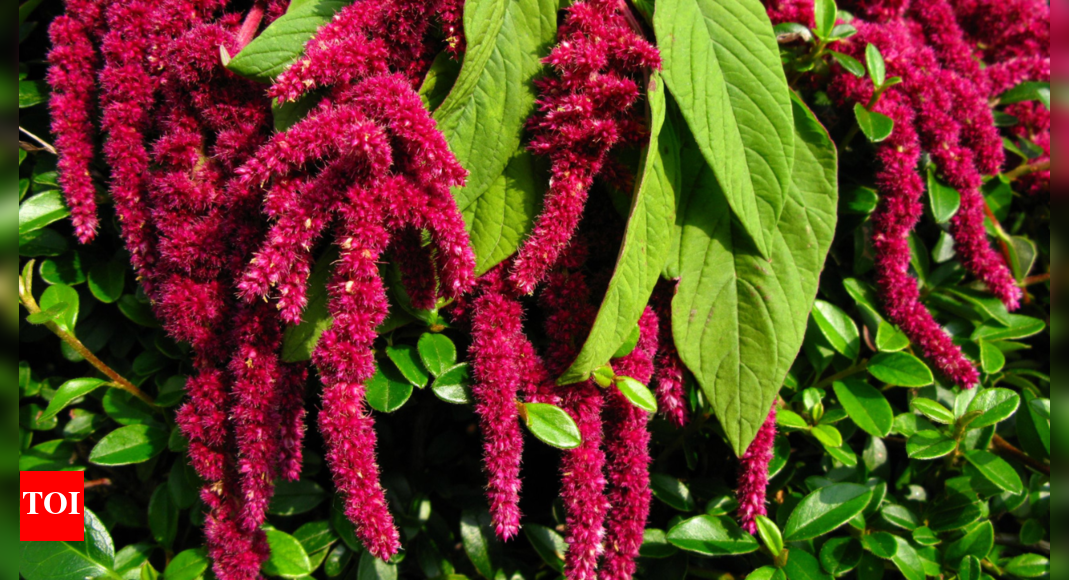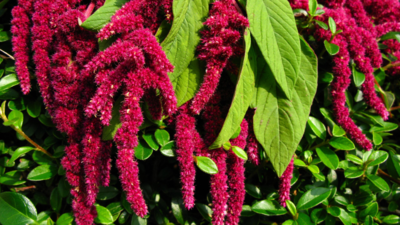
Amaranth is a highly underrated plant that deserves a place in every home garden. Not only is it easy to grow, but it also provides a dual harvest: its leafy greens and nutrient-rich seeds. Amaranth is a traditional staple in many Indian kitchens, and it is slowly making a comeback thanks to its health benefits and adaptability. Whether you want to improve your nutrition, reduce grocery bills, or grow something that thrives in hot weather, amaranth is an ideal choice.
Amaranth is more than just a grain substitute
Amaranth is often used as a grain, but technically, it’s a seed. It’s gluten-free, high in protein, and rich in fibre, making it suitable for people with celiac disease or those following low-carb or high-protein diets. When cooked, the seeds have a nutty flavour and gelatinous texture that works well in porridges, pilafs, and even baked goods.But there’s more: amaranth leaves are edible too and commonly used like spinach or methi in Indian cuisine. The leaves are packed with vitamins A, C, and K, along with iron, calcium, and antioxidants. They can help improve immunity, support bone strength, and contribute to skin and eye health.
Why every home garden needs Amaranth
Amaranth grows quickly, thrives in hot and dry conditions, and doesn’t need much maintenance. This makes it perfect for home gardeners, even beginners. The plant can be grown in pots or in garden beds, and it can tolerate less-than-perfect soil. It is also resistant to many common pests, which reduces the need for chemical interventions. Additionally, amaranth is a cut-and-come-again crop, meaning you can harvest its leaves multiple times without killing the plant.
Step-by-step guide to growing Amaranth at home
Choose the right location
Amaranth grows best in a spot that gets at least 6 hours of direct sunlight daily. Full sun encourages lush leaf growth and healthier plants. The soil should drain well and not retain too much water. You can improve your soil by mixing in organic compost or a balanced fertiliser before planting.
Plant seeds or seedlings
You can either sow seeds directly into your garden or start them indoors and transplant later. Sow seeds about 4 inches apart, just under the surface of the soil. If starting indoors, plant seeds in seed trays about 6–8 weeks before the last frost and transplant them when they are sturdy, spacing them 12 inches apart.
Thin out crowded seedlings
Once the seedlings grow to about 4–6 inches tall, thin them out so the remaining plants have enough space to grow. Overcrowding leads to poor airflow and increases the risk of disease.
Water carefully
Water your amaranth plants regularly to keep the soil moist, especially during dry spells. However, avoid overwatering, as soggy soil can cause root rot. Use your finger to check the soil, if the top inch is dry, it’s time to water.
Feed the soil for better growth
Amaranth responds well to nitrogen-rich fertilisers, especially if you’re growing it for the leaves. You can also use well-rotted cow dung or organic manure to promote leafy growth.
Use mulch to retain moisture and reduce weeds
Apply a layer of mulch (dry leaves, straw, or grass clippings) around the base of the plant. This helps retain moisture, suppress weeds, and keep the roots cool.
Harvest leaves early and often
You can begin harvesting leaves 3–4 weeks after sowing, once the plant reaches a height of 4–6 inches. Pick outer leaves or snip the whole plant above a node to encourage side growth. The more you harvest, the more it grows!
Pair with companion plants
Amaranth grows well when paired with crops like corn or beans. Corn provides shade and structure, while amaranth improves soil health and suppresses weeds.
Watch for fungal problems in humid weather
Though amaranth is hardy, it can develop fungal diseases if the area is too damp. Ensure good air circulation between plants, avoid overhead watering, and remove any yellow or wilted leaves to keep the plant healthy.
Choose your variety wisely
Some amaranth varieties are grown mainly for their leafy greens (like red amaranth), while others are bred for seeds. Decide based on your needs, or try growing both types! Amaranth is a multi-purpose plant that fits beautifully into the Indian home garden. With little care, it gives you a steady supply of protein-rich seeds and iron-packed greens. Whether you want to eat healthier, become more self-sufficient, or simply enjoy gardening, amaranth is a plant worth growing.Amaranth truly stands out as a super crop for Indian home gardeners. Easy to grow, drought-tolerant, and packed with nutritional value, it offers both health and horticultural benefits. Whether you’re harvesting the iron-rich leaves or the protein-packed seeds, this low-maintenance plant delivers high rewards. Its ability to thrive in Indian climates, repel pests naturally, and regenerate after cutting makes it ideal for beginners and seasoned gardeners alike. By adding amaranth to your garden, you’re not just growing a plant; you’re cultivating health, sustainability, and self-reliance, all in your own backyard.Also Read: Grow a bonsai garden at home with native indian trees: The complete beginner’s guide








